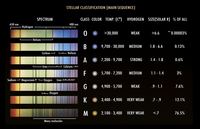
Photo from wikipedia
To date, the Frames Per Second (FPS) and accuracy of object detection based on deep learning have made rapid progress. However, the accuracy is limited by issues such as false… Click to show full abstract
To date, the Frames Per Second (FPS) and accuracy of object detection based on deep learning have made rapid progress. However, the accuracy is limited by issues such as false positive (FP) cases. FP cases can trigger malfunctions in applications requiring high accuracy, such as in autonomous vehicles, where it is essential to ensure driver safety when malfunctions occur. To reduce the occurrences of FP cases, we conducted an experiment to derive the association by separately detecting a highly relevant element called a reference class, in addition to the target class to be detected. To measure the association, we obtained the integrated association by first finding the associations between the bounding boxes of the target and reference classes. Then we generated a reference class-based model by applying the integrated association to a trained model. The reference class-based model achieved approximately 15% higher accuracy than the trained model at iteration 1,000. Besides, the proposed model reduced the FP cases to approximately half of the 18.964% in the conventional method; the FP reduction through an increase in iteration was only 11.008%. The reference class can be applied in various fields, such as security and autonomous vehicle technology. It can be used to reduce the FP cases and improve the accuracy performance limits in object detection. Furthermore, it is possible to reduce the cost of reinforcing the training dataset and using high-performance hardware, and the time cost of increasing training numbers.
Journal Title: International Journal on Advanced Science, Engineering and Information Technology
Year Published: 2020
Link to full text (if available)
Share on Social Media: Sign Up to like & get
recommendations!